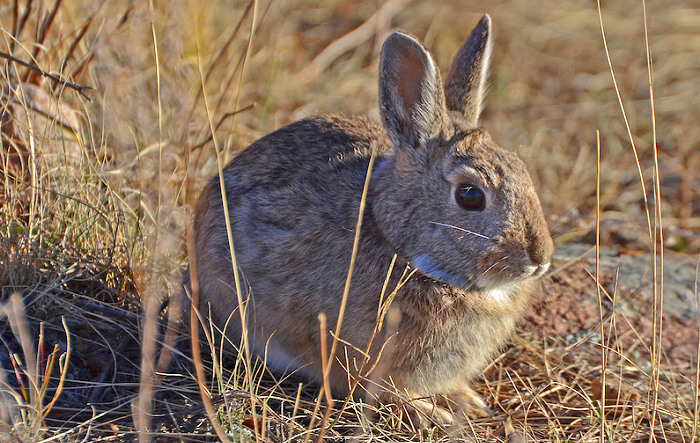The Backcountry Press
The country's premier daily HUNTING, FISHING & OUTDOOR news in the USA and around the globe. Read whats happening in your neck of the woods & beyond.
The Backcountry Outdoor News reports the latest hunting and, fishing news along with fishing derbies and tournaments
from:
| ||||||
| ||||||
|
HUNTING NEWS CATEGORIES
© 2010 Backcountry Press Outdoor News - All Rights Reserved Website Design by:
Connect With Us
 | ||||
Disclaimer: The views expressed on this site are that of the authors and not necessarily that of TBC Press
 | ||||
Wild Rabbit Die-Offs from Disease Reported in Several States - Not Related to COVID-19
Submitted by: TBC Press
Posted on: 04/23/20
News # 13501
The viral agent, Rabbit Hemorrhagic Disease Virus (RHDV), is a calicivirus with two strains, RHDV-1 and RHDV-2, being reported in North America in recent years. RHDV-2 is known to affect wild rabbits and was determined to be the agent in the Lubbock and Hockley County cases. RHD is a Foreign Animal Disease (FAD), but has been detected in Canada, Washington and Ohio.
COLORADO
CPW and CDA increased efforts to raise awareness of the potential for this disease in Colorado after these reports in other Western states.
Colorado Parks and Wildlife (CPW) and the Colorado Department of Agriculture (CDA) report that Rabbit Hemorrhagic Disease Virus type 2 (RHDV-2) was confirmed late last week in three wild cottontail rabbits approximately 10 miles southeast of Alamosa in Costilla County, CO.
CPW collected carcasses for testing after a report of dead wild rabbits in Costilla County on April 13th and submitted them to the CPW wildlife health laboratory for necropsy. Testing conducted by the USDA Foreign Animal Disease Diagnostic Laboratory was reported as positive for RHDV- 2 on April 17, 2020. Recent unusual mortalities in Colorado wild rabbits have only been reported in Costilla County to date, but CPW is requesting public assistance in identifying additional mortality events.
You can find more information on RHD at https://cpw.state.co.us/Documents/Wildlife-Health/Rabbit_Hemorrhagic_Disease.pdf
TEXAS
Texas Parks and Wildlife Department (TPWD) has received test results confirming that Rabbit Hemorrhagic Disease (RHD) was diagnosed in a wild black-tailed jackrabbit in Lubbock County and a wild cottontail rabbit in Hudspeth County. This marks the first confirmed cases of RHD in wild rabbits in Texas and follows the discovery of the disease in domestic rabbits in Hockley County, which was announced in a recent Texas Animal Health Commission news release.
“The loss of this prey species can affect big game populations as well as other populations like rodents due to a shift in what predators will go after,” said John Silovsky, TPWD Wildlife Division deputy director. “That’s especially true in fragile areas like the Trans Pecos.”
“Texas Parks and Wildlife Department (TPWD) will be monitoring wild rabbit populations to determine the extent of the disease,” said Dr. Bob Dittmar, TPWD wildlife veterinarian. “We are continuing to receive reports of dead rabbits from the western part of the state.” People can contact their local TPWD wildlife biologist if they notice sick or dead rabbits. We want to reassure everyone this disease does not affect people or pets. TPWD will work with TAHC to keep the public informed as we learn more about the extent and severity of the disease.”
Domestic rabbit owners who have questions about RHDV2 or observe sudden death in their rabbits should contact their private veterinarian. Private veterinarians are requested to contact the USDA-APHIS or the TAHC to report any suspected cases at 1-800-550-8242. Report all unusual mass morbidity (sickness) or mortality (deaths) events to the TAHC.
You can find more information on RHD in the USDA Animal and Plant Health Inspection Service fact sheet on Rabbit Hemorrhagic Disease at https://www.aphis.usda.gov/publications/animal_health/fs-rhdv2.pdf.
This virus has had significant impacts on domestic rabbits as well as wild rabbits and species that prey upon them in Europe. However, multiple dead or sick rabbits can also be a sign of tularemia or plague, diseases that can cause serious illness in people. Do not handle or consume sick or dead wildlife, and do not allow pets to contact or consume wildlife carcasses. RHDV-2 is from a different viral family than coronavirus and is not related to COVID-19.
Stock Image courtesy of Wayne-D.-Lewis, Co fish & game
####
COVID-19
To help prevent the spread of COVID-19 and continue to enjoy outdoor activities during this pandemic, ALL outdoorsmen (man, woman, child) must follow the guidelines (set by nps.gov) to help control the spread of COVID-19. These guidelines include; social distancing, the Leave No Trace principles, including pack-in and pack-out, to keep outdoor spaces safe and healthy.
Rabbit Hemorrhagic Disease Virus type 2, a highly contagious and fatal disease of rabbits and hares has been detected for the first time in Colorado. Cases have now been reported in New Mexico, Arizona, and Texas.
RHDV-2 is considered a foreign animal disease and is of high concern at the state and federal levels. Until recently, RHDV-2 was not considered a virus that would infect North American cottontails or hares. RHDV-2 does NOT affect humans or domestic species other than rabbits, but is highly contagious and lethal among both wild and domestic rabbits.














